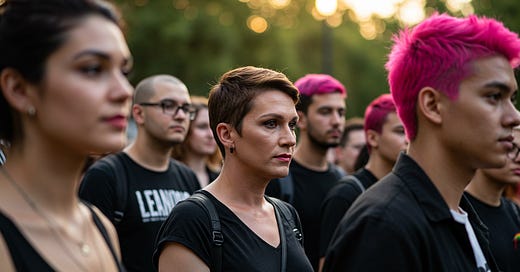Tomorrow, April 11, 2025, students nationwide will participate in the Day of Silence—a powerful demonstration against the harassment and bullying that silences LGBTQ+ youth in our schools. Your participation can make a profound difference.
The Power of Your Silent Stance
When you choose silence for one day, you communicate something powerful: that the forced silence of LGBTQ+ students due to bullying, harassment, and exclusion is unacceptable. Your deliberate silence acknowledges those who cannot safely express their authentic selves.
Research shows that LGBTQ+ students experience disproportionate rates of harassment, with many reporting they feel unsafe at school. Every student deserves an education free from fear and discrimination—this principle transcends political divides and speaks to our shared humanity.
Why Your Participation Matters
Your silent participation creates a visible presence that can't be ignored. When classmates and teachers notice numerous students maintaining silence, they naturally ask "why?"—opening crucial conversations about inclusion and respect.
This simple act accomplishes several important goals:
It creates solidarity with marginalized peers who may feel isolated.
It educates your school community about ongoing challenges.
It demonstrates that allies exist and care deeply about these issues.
It builds momentum for positive change in school culture
Taking Action Beyond Silence
The Day of Silence becomes most meaningful when it leads to action. Consider wearing identifying buttons or symbols to explain your participation. Carry small information cards to share when asked why you're silent. After the day concludes, participants can attend “Breaking the Silence” events to discuss their experiences and plan constructive actions to make schools safer.
Join a Movement Larger Than Yourself
By participating, you join thousands of students nationwide who share your values. This collective action has already driven meaningful changes in school policies, curriculum inclusion, and greater awareness.
Your silence tomorrow can help ensure that, eventually, no student will be silenced by intimidation or fear. It may feel like a small gesture, but when multiplied across classrooms and campuses nationwide, it becomes a chorus too powerful to ignore.
Will you help break the silence by being silent tomorrow?
The Day of Silence and the Day of (No) Silence are two related but distinct events organized to address issues faced by LGBTQ+ individuals, particularly in schools.
Day of Silence
Purpose: The Day of Silence is a student-led event where participants take a vow of silence to protest the bullying, harassment, and discrimination faced by LGBTQ+ students. The silence symbolizes the silencing effect of these injustices 123.
History: It was first organized in 1996 by students at the University of Virginia as part of a class assignment on nonviolent protests. GLSEN adopted the event in 2001, which has since grown into one of the largest youth-led demonstrations worldwide 35.
Observance: Participants remain silent throughout the school day, often handing out speaking cards to explain their silence. The day concludes with "Breaking the Silence" rallies to discuss ways to create more inclusive environments 35.
Date: Traditionally observed on the second Friday of April each year 37.
Day of (No) Silence
Purpose: Rebranded in 2024 from the Day of Silence, the Day of (No) Silence emphasizes active advocacy rather than silence. It focuses on opposing laws and policies that negatively impact LGBTQ+ rights and visibility, particularly targeting attempts to erase transgender and nonbinary people from public life 346.
Observance: Participants use their voices throughout the week leading up to the event to raise awareness, advocate for change, and protest harmful legislation. The shift reflects a call for action rather than symbolic silence 46.
Date: It is observed annually in early April, with specific dates varying slightly each year. For example, in 2025, it was held on April 4 4.
Both events aim to support LGBTQ+ individuals but differ in approach: one uses silence as a metaphor for oppression, while the other calls for vocal activism against systemic discrimination.




